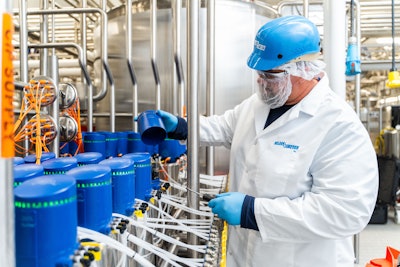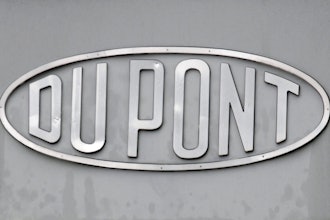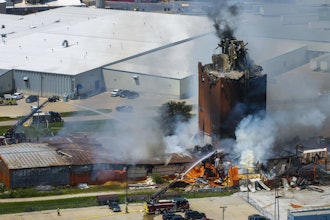
Sanitation and hygiene are not merely regulatory checkboxes for food manufacturers but the bedrock of successful operations. A truly effective program extends beyond basic compliance, embeds proactive measures, and fosters a strong culture of safety throughout the entire facility. Nelson-Jameson works with these manufacturers daily and sees firsthand the importance of keeping operations running smoothly.
Prevent Downtime with Preventive Maintenance
Preventive maintenance is a shield against costly unplanned downtime and potential contamination. While sanitary equipment is inherently designed for cleanliness, its components inevitably undergo wear and tear. If these components (e.g. rubber seals) are not replaced in time, they can degrade, leading to foreign material contamination as they break down. This degradation also carries the significant risk of microbial contamination, so a good preventative maintenance program is just as important as a sanitation program.
We often share the old adage, “plan your maintenance, or it will plan you,” as it perfectly captures this principle. At Nelson-Jameson, we stress the importance of adhering to recommended minor and major service intervals for assets. By doing so, organizations can prevent unexpected failures that disrupt production and compromise hygiene standards.
ROI of Sanitation Initiatives and New Technologies
Quantifying the ROI of sanitation and hygiene initiatives, especially preventative measures, can sometimes seem challenging, but their benefits are undeniably tangible. One measure of ROI, as we share with partners, is the immense cost of a voluntary or mandated recall. The financial burden includes not only damage to brand recognition but also legal fees and manufacturing costs. Protecting brand reputation is an important — though difficult to quantify — benefit of maintaining high food safety standards. One very simple measure of ROI is ensuring you don't have unplanned downtime. For instance, a line going down for larger companies we work with could cost a quarter of a million dollars an hour.
Many organizations are now leveraging Computerized Maintenance Management Systems (CMMS) to track KPIs like unplanned downtime and planned maintenance activities for specific assets in a manufacturing facility. Analyzing these numbers can reveal, for instance, an asset running at only 50% efficiency due to a lack of preventive maintenance activities.
In addition to the CMMS, we’re also seeing cloud-based software for monitoring critical processes such as clean-in-place (CIP) and pasteurization. These technologies empower personnel in vital production roles to oversee these processes from both local and remote locations. The primary advantage is the ability to identify process abnormalities much quicker through trend information provided by the software. Such real-time insights contribute to more proactive and data-driven sanitation management.
Effective Training and Fostering a Strong Food Safety Culture
Minimizing human error in sanitation and hygiene practices hinges on effective training and fostering a robust food safety culture. From our vantage point at Nelson-Jameson, redundancy is key in both training and promoting this culture. This involves creating repeatable checklists for tasks such as servicing assets or organizing sanitation carts with color-coding for specific facility areas. The goal is to ensure continuity, especially between shifts, so that all staff members possess the same awareness and proficiency in sanitizing areas or servicing equipment.
Ongoing communication is vital to keeping current employees informed and training new workers joining from other departments. Challenges like improper training, unclear communication, and a lack of regular audits can significantly undermine a program. At Nelson-Jameson, we emphasize continuous improvement and offer a variety of resources, including audits, assessments, training, and workshops, to support our partners in this endeavor. Ensuring tools are used only in their designated areas and that single-use items like gloves or aprons are properly disposed of prevents cross-contamination and reuse.
A successful sanitation and hygiene program is much like building a robust, multi-layered defense system: it requires diligent construction (preventative maintenance), continuous reinforcement (ongoing training and technology adoption), and vigilant monitoring (audits and supplier partnerships) to withstand evolving threats, ultimately safeguarding both product and brand.
Kyle Willfahrt is a Sanitary Process and Maintenance Specialist at Nelson-Jameson, a leading distributor in the food processing industry.























